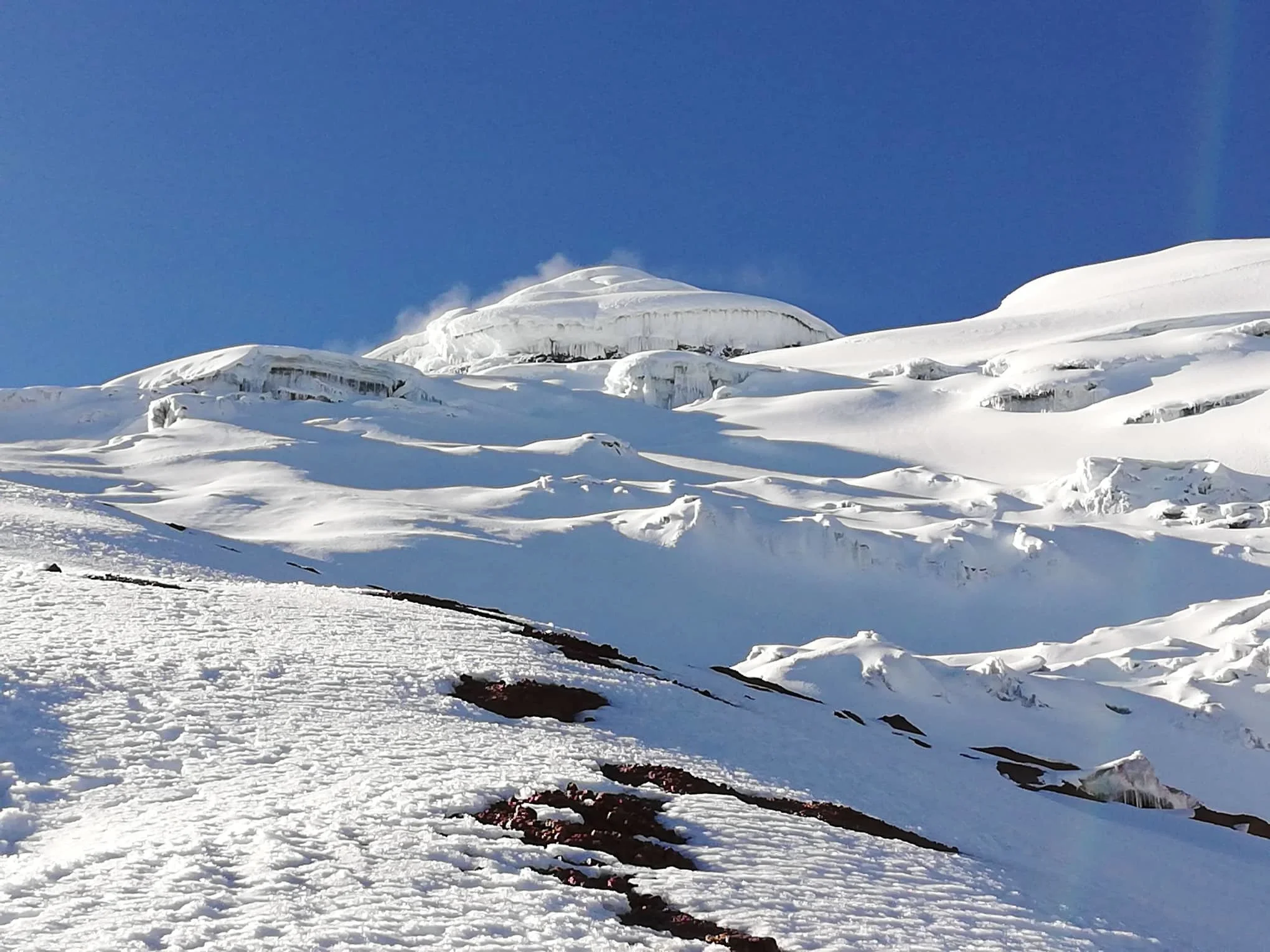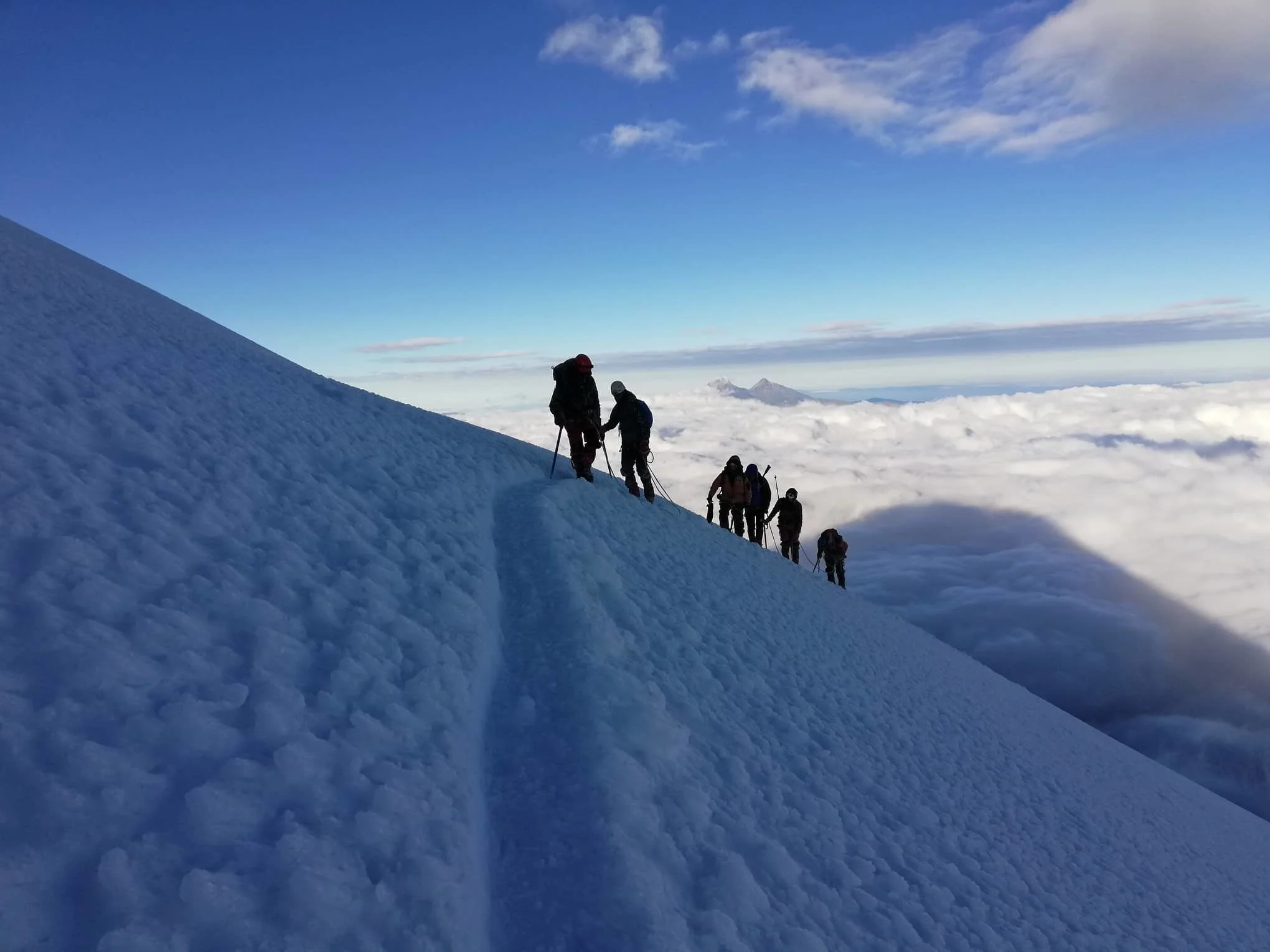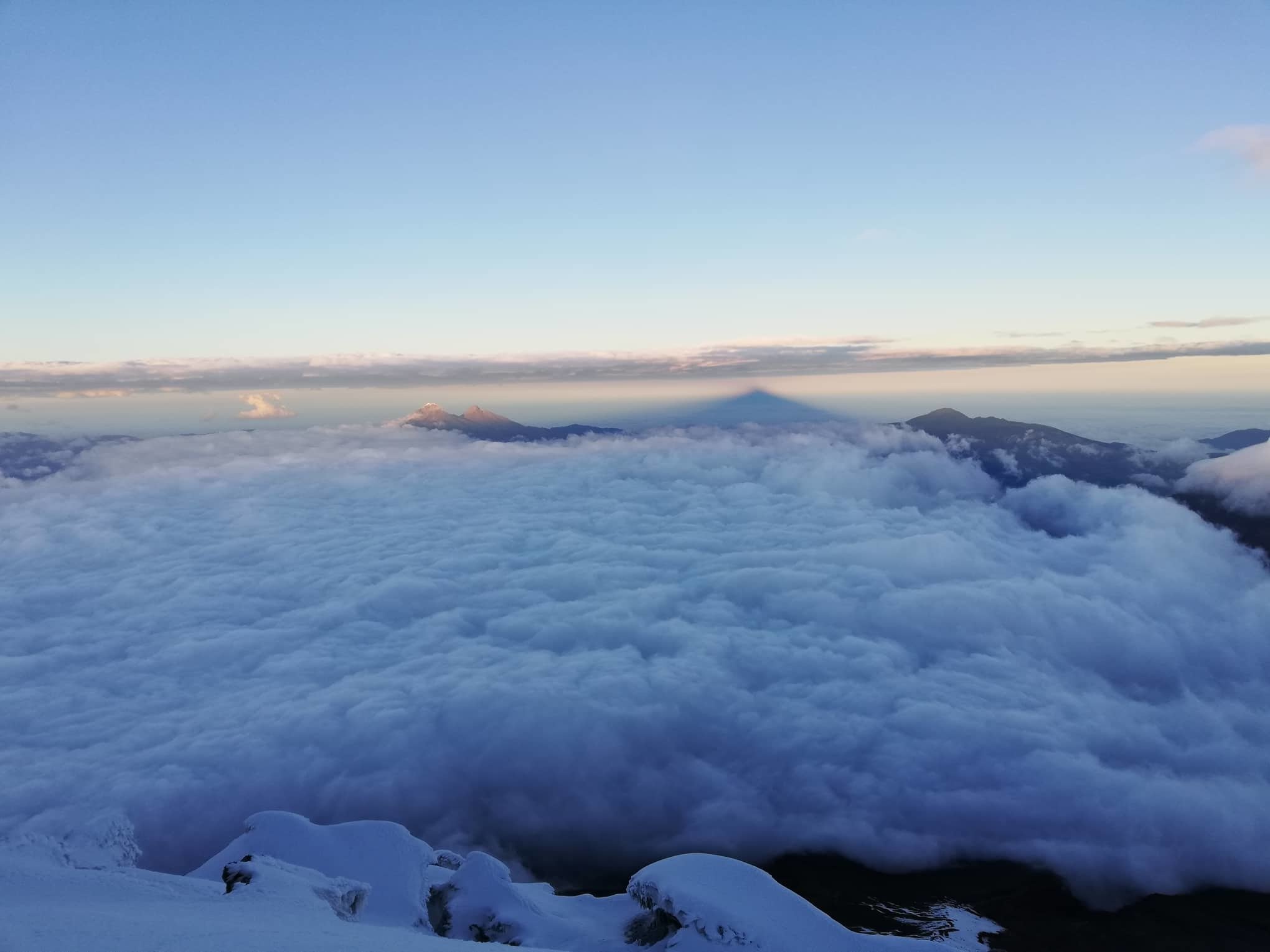Cotopaxi
second chances
Mountain: Cotopaxi
Altitude: 19,347ft | 5897 m
Location: Saquisilí,Ecuador -0.822573 -78.668243 When we get second chances, do we do better? Are we harder, faster stronger? Are we better prepared or more deliberate? The second chance to climb Cotopaxi has convinced me that second chances might not make you better, but they give you a bit more mental fortitude.
When we get second chances, do we do better? Are we harder, faster stronger? Are we better prepared or more deliberate? And does the previous “experience” give us a marginal advantage? The second chance to climb Cotopaxi has convinced me that second chances might not make you better, but they give you a bit more mental fortitude.
My first attempt to climb Cotopaxi resulted in a faint-hearted retreat after fighting the rain in the darkness. Around midnight, as we left the cozy refuge hut to bid for the summit, our attempt was met with strong winds and drizzle that had quickly converted us into walking icicles. After struggling for about four hours up the mountain, we came back soaked and frozen, as we have just swum across the pond in the middle of January. On return to the hut, as we undressed from layers of windbreakers and crampons, the gear was cracking and shedding ice mixed with clumped ice dirtballs of dark red pebbles. That day, I would not warm up until we had hit a traffic jam in Quito and were trapped in a car without air conditioning under the direct rays. There, on the backseat of the hot truck of our guide, the hardship of the previous night felt like a movie you watch on the plane in the haze of the jet-leg.
Nonetheless, two days later I have found myself in the same refuge hut. This time things look different and much more sanguine: the sun was shining, we had arrived at the refugee camp super early, having enough time to eat, read and nap — divine calmness of lazy pre-summit mountaineering routine). However, the night did not turn out better than the first attempt: wind and snow were almost as strong as the ones from the previous attempt and the rain was replaced by light hail. At one point when I glanced at my poles, I have realized that they were covered with ice that was about 5 mm thick, perfectly curving like someone was trying to use them to make gigantic popsicles in a freezer. And it was not just poles — any surface on me was covered with various thicknesses of the icy shell.
In my head, Cotopaxi is classified as a “beginner mountain”. Scrolling through pictures on Google, people stand on the summit in the bright sun rays, in very light layers of clothing, making it look like a morning walk rather than a climb. Although the explorer Alexander von Humboldt called Cotopaxi “unattainable” (since in 1802 he only reached the area where the Rivas refuge stands today), it would be Germany’s Wilhelm Reiss and Colombia’s Angel Escobar who made reaching the summit a reality in 1872. Today climbing Cotopaxi became an advanced tourist attraction — lines of tourist busses, family cars, and minivans make it to the parking lot underneath Refugio and one does not need special training or technical skills to try for the summit in less than 15 hours. And yet, Cotopaxi has reminded me that there is no such thing as “easy mountains” since it just took a slight weather change to make the climb unbearable.
That day when the darkness just started fading away, I found myself on the last steps before the summit. The lips of people who arrived to the summit after us were dark blue from the cold. We had to use an ice ax to crack the ice around the headlamp and to turn it off. As we were standing on the summit, the clouds would rush through the summit, so we had to wait for clear moments in order to take validating “summit photo”. But the clouds rushed so fast that I felt that I am onboard a fast rocket rather than on the top of the mountain. But when the clouds had disappeared for a prolonged moment, I finally saw the brown earth covered in cracks like a trunk of a hundred-year-old tree. On the horizon, two Illinizas and Antisana felt like toy towers. And as the sun was rising, we could see the majestic shadow of the volcano Cotopaxi itself as a dark triangle in the sea of the clouds below. It was one of the most beautiful sunrises I have seen during my climbing experience and the surreal glory of the landscape made me forget about the discomfort of the cold. My second attempt was a success, yet as painful as miserable as the first one. Yet, given another chance, I would attempt to come to see Cotopaxi again…



